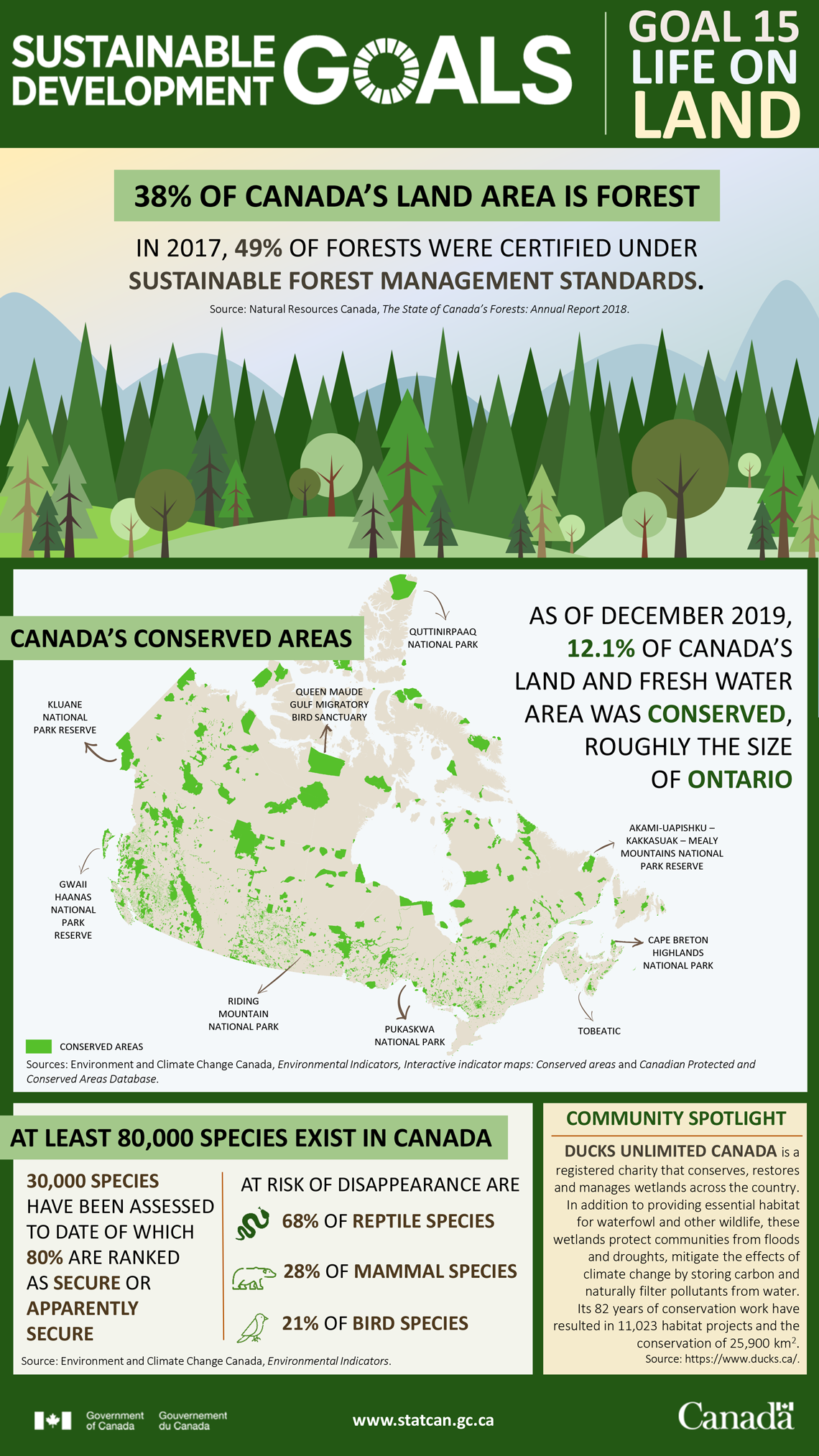 Agenda 2030 Sustainable Development Goals Report, 2020
Agenda 2030 Sustainable Development Goals Report, 2020
Goal 15, Life on Land
Archived Content
Information identified as archived is provided for reference, research or recordkeeping purposes. It is not subject to the Government of Canada Web Standards and has not been altered or updated since it was archived. Please "contact us" to request a format other than those available.

Description: Sustainable Development Goals: Goal 15, Life on Land
38% of Canada’s land area is forest
In 2017, 49% of forests were certified under sustainable forest management standards.
Source: Natural Resources Canada, The State of Canada’s Forests: Annual Report 2018.
Canada’s conserved areas
As of December 2019, 12.1% of Canada’s land and fresh water area was conserved, roughly the size of Ontario
A map shows conservation areas in Canada
- Kluane national park reserve
- Queen Maude gulf migratory bird sanctuary
- Quttinirpaaq national park
- Gwaii Haanas national park reserve
- Riding mountain national park
- Pukaskwa national park
- Tobeatic
- Cape Breton highlands national park
- Akami-Uapishku-Kakkasuak-Mealy Mountains national park reserve
Conserved areas
Sources: Environment and Climate Change Canada, Canadian Environmental Sustainability Indicators, Interactive indicator maps: Conserved areas and Canadian Protected and Conserved Areas Database.
At least 80,000 species exist in Canada
30,000 species have been assessed to date of which 80% are ranked as secure or apparently secure
At risk of disappearance are:
- 68% of reptile species
- 28% of mammal species
- 21% of bird species
Source: Environment and Climate Change Canada, Environmental Indicators.
Community Spotlight
Ducks Unlimited Canada is a registered charity that conserves, restores and manages wetlands across the country. In addition to providing essential habitat for waterfowl and other wildlife, these wetlands protect communities from floods and droughts, mitigate the effects of climate change by storing carbon and naturally filter pollutants from water. Its 82 years of conservation work have resulted in 11,023 habitat projects and the conservation of 25,900 km2.
Source: Ducks Unlimited Canada
- Date modified:
